The most horrific reminders of Cambodia’s past are in Phnom Penh – but there are also colorful markets, temples, and a royal palace – as you’ll learn in this guide to the country’s provincial capital.

It’s rare to travel to a country and not miss much by avoiding its capital. Actually, there are tourists who do not make it to Phnom Penh at all. They go from Bangkok to Siem Reap and from there straight to Sihanoukville from where they cross the border to Vietnam via Kampot and Kep; and that’s it.
Arrival or: Falling Into a Rabbit Hole
A rainy Sunday with not much to do. It’s not pleasant to walk in the rain and it’s even less pleasant to walk in the rain in a city as dirty as Phnom Penh when the water washes all sorts of disgusting stuff including dead rats on the sidewalks. Where sidewalks exist, that is.
The first day or two in a place I’ve never been to before is always like having fallen into Alice’s rabbit hole. Pleasantly real and amazingly surreal at the same time. There are no rabbits with watches crossing my way, but many people. All of them seem to belong here and everyone knows where to head to….everyone but me. And I can rub my eyes as often as I please – I am here in this unreal reality.
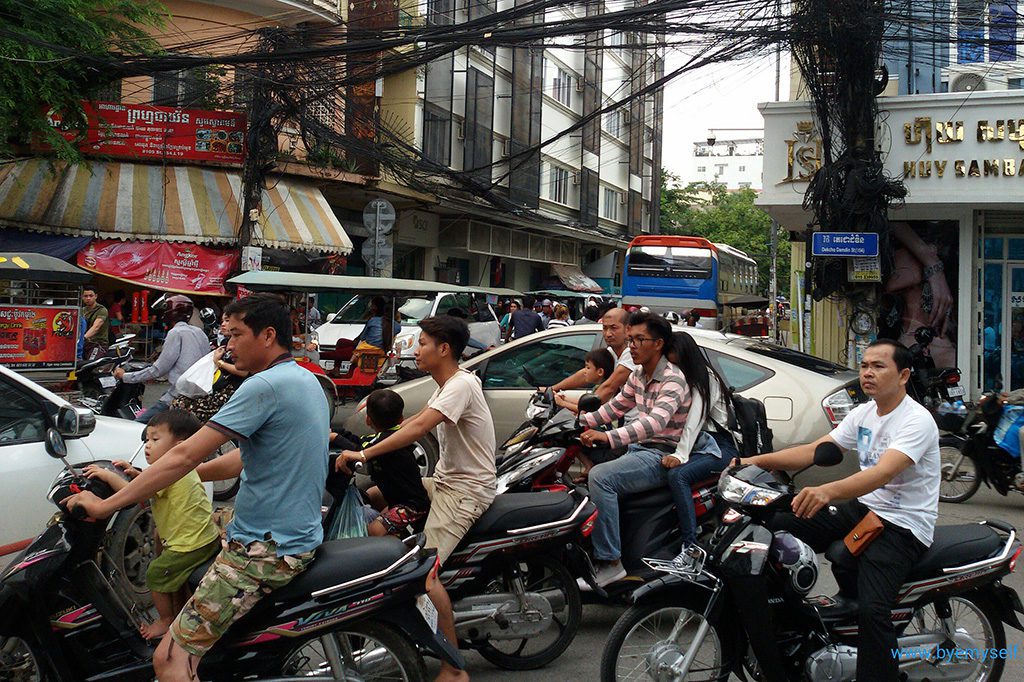
It is weird walking the streets that I’ve seen as lines on Google maps so often. It is irritating seeing places that were little pictograms coming to life.
Due to the weariness and the jet lag, I’m not of a sound mind so that only adds more of this ‘walking on clouds through a dreamland’ feel to it. And then, little by little and literally step by step I’m sinking in, the place and the faces become more familiar, and I feel more confident and safer. But it also loses a certain magic. I’ve arrived.

Good Morning, Phnom Penh
Since this process usually takes the first one or two days, the first stop of my tour always stays in a certain blur. Mostly at the end of my trip, I’m coming back to where I started to take the flight back. This gives me the chance to reconnect with this first stop and put things into perspective.
Streetlife
Phnom Penh is definitely one of the cities that leaves you exactly two choices. You either love it or you hate it. I haven’t felt this so strongly in any other city I’ve ever been to; well maybe Praia, the capital of Cape Verde.
Although being the country’s capital and home to 1.5 million people, the city has mostly a small-town charm.
There are very few boulevards – actually, they are just roads where the potholes are not as deep as in the narrow side streets.
Step-A-Side
Forget about sidewalks. They exist, but you can hardly walk them. Mostly, either shops and diners use them as an extension of their businesses. If not, they are blocked by parked motorbikes, cars, or mobile kitchens.

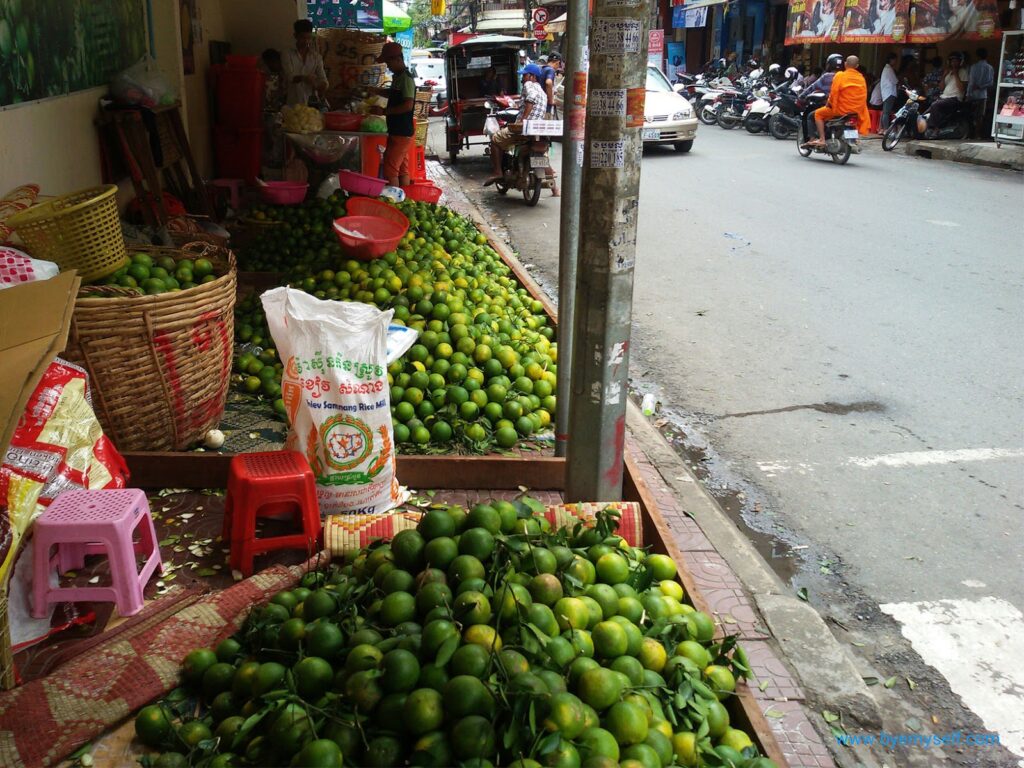
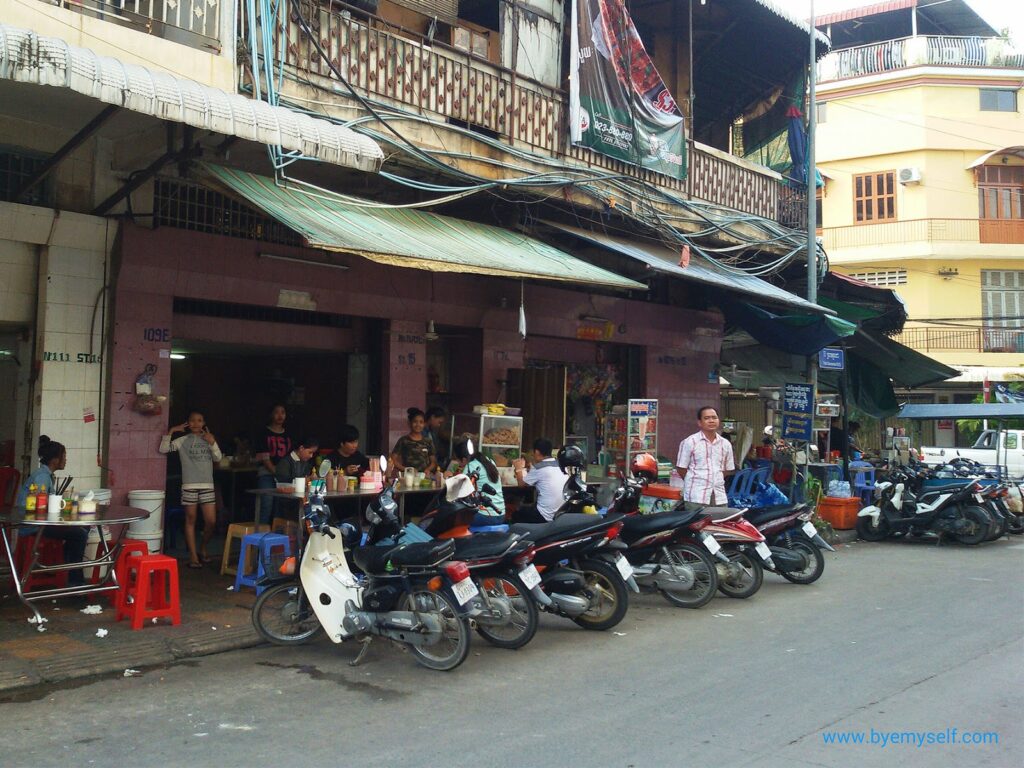
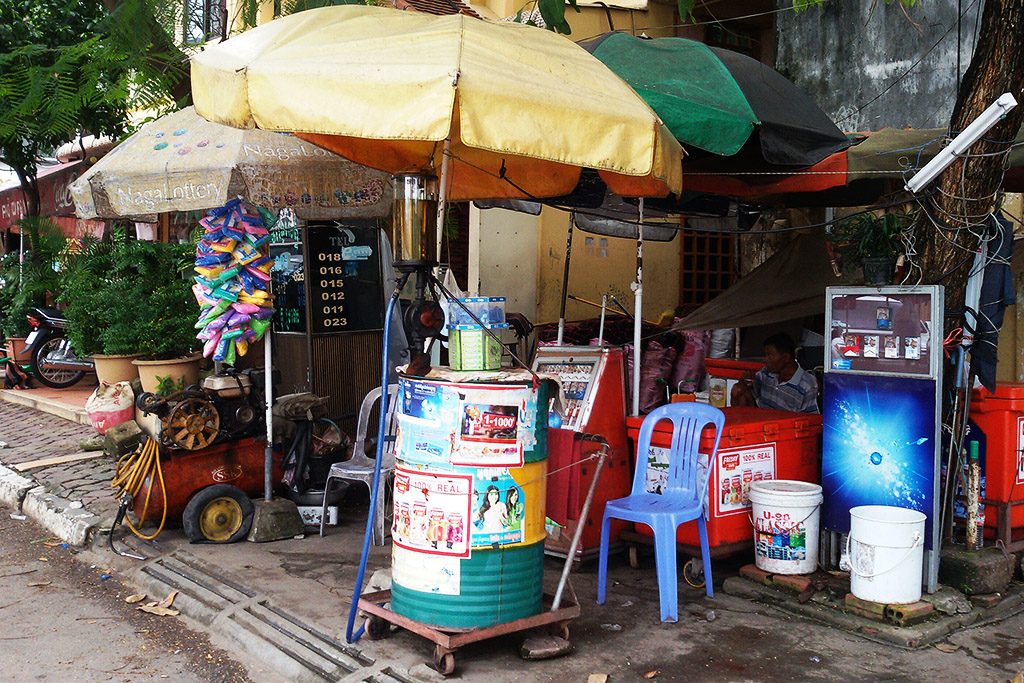
Guided by Senses
There are also traffic lights. They are so few that they are actually indicated on my map.
Unfortunately, there are not that many drivers paying attention to them. They don’t even bother to slow down a bit at the clear red light. It was a very unpleasant surprise as I intended to cross the road at a pedestrian crossing hoping that would be safer. As a matter of fact, it was the only time a car almost run me over.
After that, I didn’t worry about any exterior traffic indicator anymore and only relied on my senses.
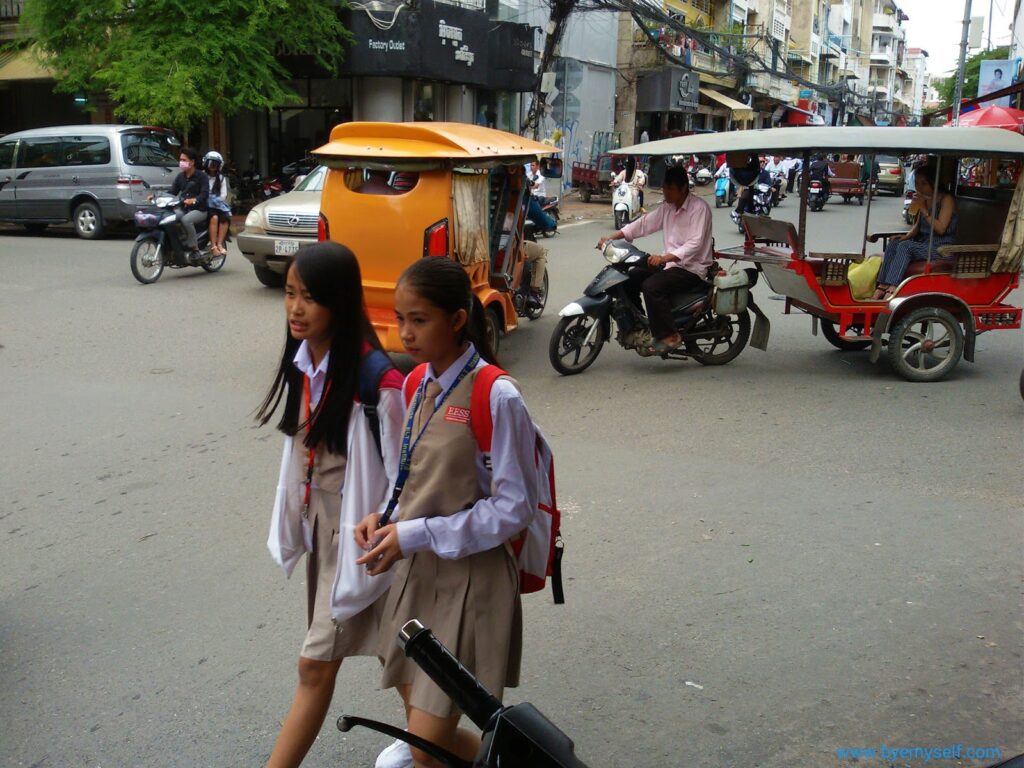
Although Phnom Penh has a rather provincial vibe, its inhabitants make up for it by being twice as fast and twice as buoyant and noisy. There are all these little shops and diners packed with people, there are kids and cats and dogs. Everybody seems to own either a motorbike or a tuk-tuk. Since there are far more vehicles than passengers, every driver advertises his service as you pass by. Depending on your mood, it’s either cute or unnerving.
A Threepenny Opera
While waiting for a passenger, the drivers play this really cool game. It’s some sort of flip-flop boccia. They take their sandals off – mostly plastic flip flops – and kick them skillfully towards a target. This can be some piece of garbage – there is enough laying around in Phnom Penh. Today, it even was a bundle of bills. Seems to be some sort of a poor man’s casino.
And there is a lot of very obvious prostitution. Painted Cambodian ladies and rather repulsive Barangs, fat and very red from too much sun and too much booze coming from the devil knows where.
Another thing that blunts my enthusiasm is poverty. Usually, when I’m travelling, I have this early bird routine of visiting all the museums and sights and being half dead by 6.30 p. m. So I hardly ever go out.
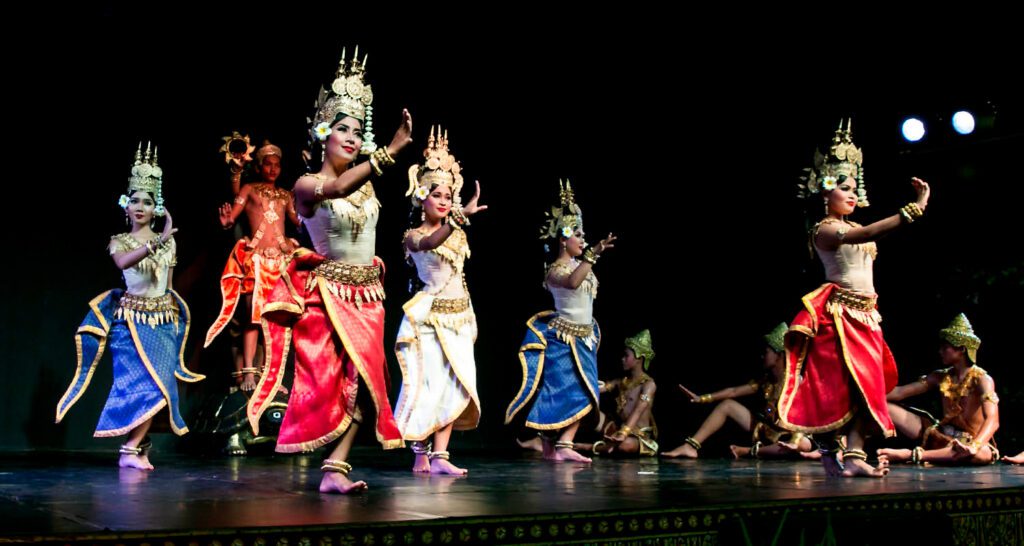
(Photo: Jim Heston/Cambodian Living Arts)
Anyhow, yesterday, I went to this really beautiful show just around the corner from my hotel at the National Museum. Every night at 7 p. m. they have a great show of traditional dances and some traditional puppet theater. It’s very endearing.
Only on my way home, I saw people getting to sleep on the sidewalks. Mothers with toddlers. And the streets here are not exactly paved with gold.
I know that people who have been to e. g. India will just shrug. Still, it twisted a huge knife in my heart and put a veil of sadness over the beautiful evening I’d had.
Visiting Hell: Tuol Sleng and Choeung Ek
Talking ’bout the veil of sadness.
On the first, rainy day I finally ended up visiting the most atrocious places – the Tuol Sleng Genocide Museum – also known as S21 – and Choeung Ek, the infamous killing fields.
And while I walked these places I’ve decided not to write about it.
Politically it’s far too complex to wrap up in three sentences.
The Background
It’s not only ‘and then the bad man came and killed all these people‘. Obviously, there is a complex history with many different aspects of why the Khmer Rouge came to power in the first place and why they were initially even welcomed by a part of the Cambodian people.
As always in this region, it has also a lot to do with European colonization and American military involvement, too. And funny enough, it has not that much to do with the Khmer Rouge being communists, the world’s favorite villains. Because for one Karl Marx, co-author of the Communist Manifesto, never ordered anybody to kill let alone small children. And secondly, Cambodia was freed from the Khmer Rouge by the Vietnamese army, hence, troops from a communist country.
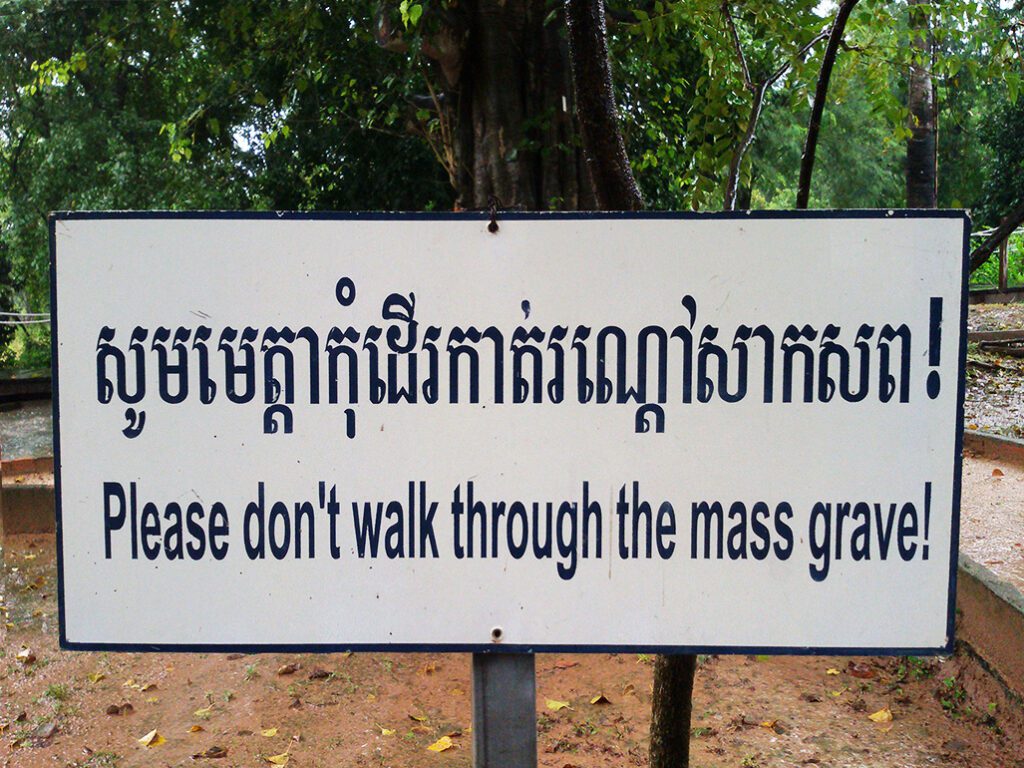
There are excellent posts on the internet that explain and examine this whole topic in an extended, hence worthy, and dignified way.
So I don’t even try to do so.
The Memorials
As much as I don’t want to write about the historical and political events, I even less feel like writing about what I’ve seen at the two memorial places. My goal is to entertain you with fun little stories, I like being ironic and sarcastic. Notwithstanding, I do deal with historical and political topics here and there, since they are an important part of my travels. They bring me closer to the people and make me understand their everyday life better.
Nonetheless, what happened during the Khmer Rouge’s tyranny is too barbaric to be just treated in a couple of sentences on a fun travel blog.

I already find it bizarre that the ‘trips’ to Tuol Sleng and Choeung Ek are listed as the must see attractions on the internet. Even here in Phnom Penh, the tour operators are advertising for this halfway trip to hell like they do for a city tour.
The owner of my guest house, she’s French, told me that the young people are not talking about this past. Apparently, it has been only recently that they start to learn about this lesion in their people’s history.
Actually, at Tuol Sleng I’ve learned that only 6% of the visitors are Cambodian. Maybe it’s the Asian mentality and of course, the Buddhist philosophy that lets bygones be bygones. No matter how, I’m not sure if this really heals the scars on bodies and souls.
Trip to Hell
However, I got a tour of both places for 10 bucks. Although it was a group tour, there were just two of us, a young German and me.
On the bus’s TV, they screened a very informative film with interviews of Pol Pot, eyewitnesses, and journalists that were in Cambodia during the time of the Khmer Rouge. Also Leung Ung was interviewt. She’s the writer of First they killed my father. This book accompanied me during my entire trip through Cambodia and I recommend it to every visitor. It explains a lot of what Cambodian people don’t talk about – be it only for the lack of English skills.
So anyway, this film prepares you in a very informative fashion. Actually, this additional information and preparation is the main reason why I would recommend to rather go on a tour than with a tuk-tuk driver.
The film’s information is then completed by the excellent audio guide you get at Choeung Ek that guides you through this place of horrors.
Royal Palace and Silver Pagoda
Of course, there are also nice things to see in Phnom Penh. For instance, the Royal Palace which is by far not as grandiose and impressive as the one in Bangkok, nonetheless, it’s one of the main attractions.
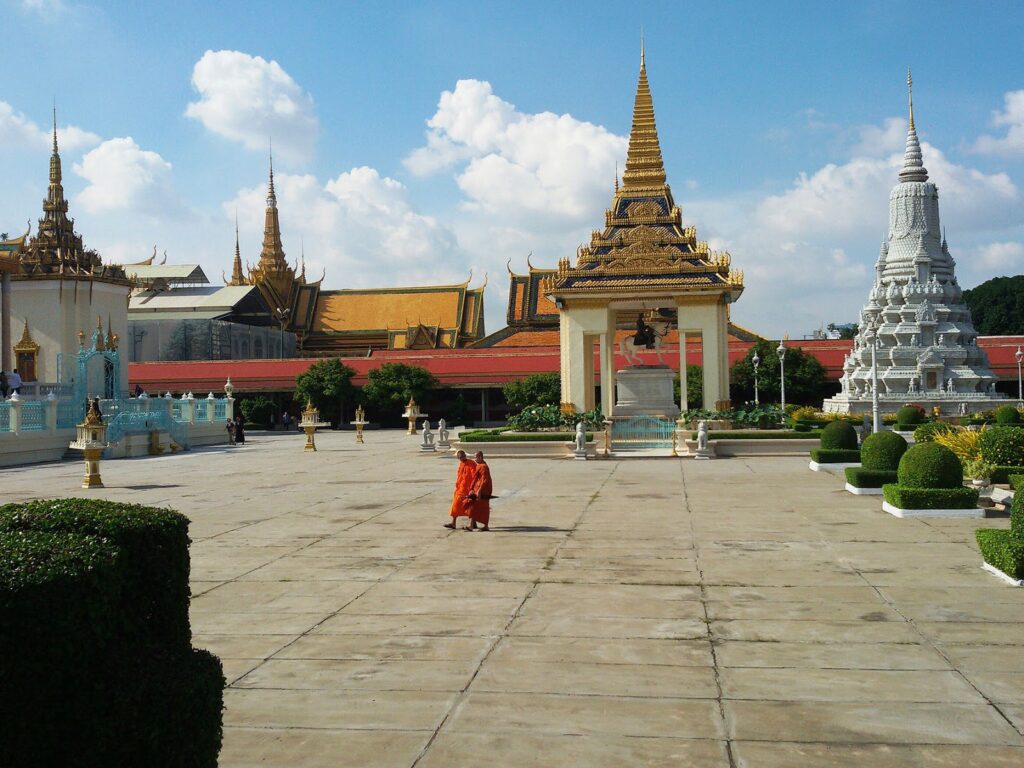
It’s open from 8 a. m. to 11 a. m. and then again from 2 p. m. till 5 p. m. Keep in mind that you are denied access if you are not covering your shoulders and knees. They are really strict about it.
Anyway, I recommend you have a large, light scarf on you all the time since it can always occur that you drop in at a Wat or another site where covering is required.
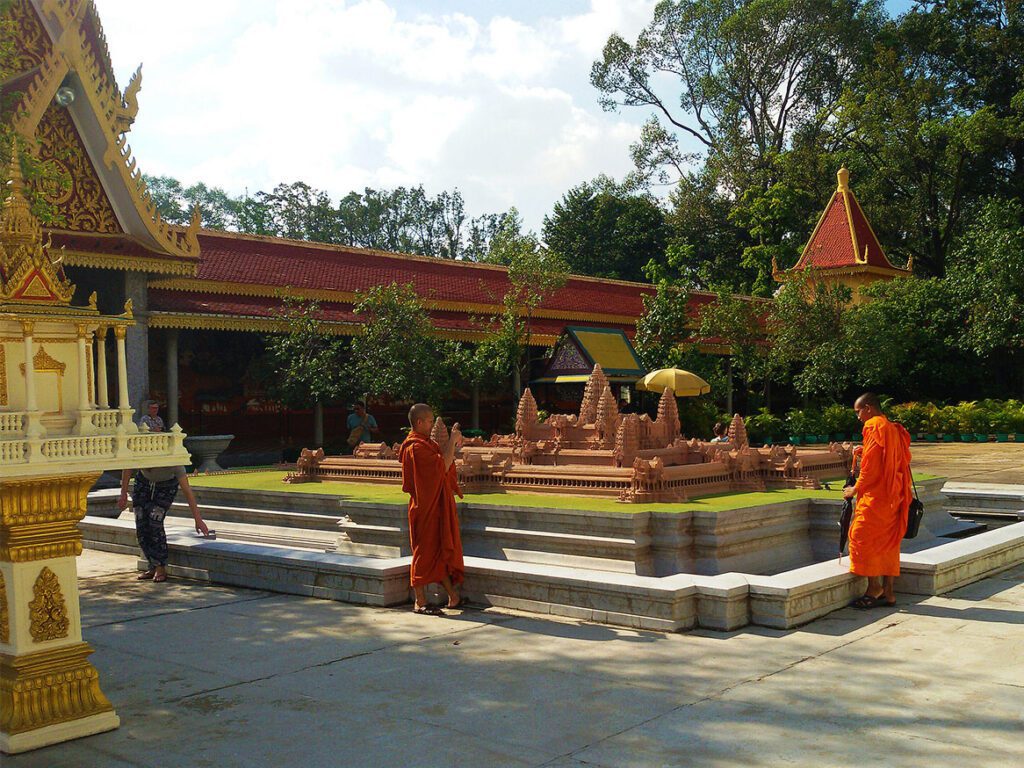
Besides this most majestic site there are four Wats you should visit:
Wat Phnom
…is located all the way in the north of the city center close to the Cruise Terminal. It’s a Buddhist temple built in 1372, that stands 27 m / 88.5 ft above the ground. It’s the city’s largest temple and its central point.
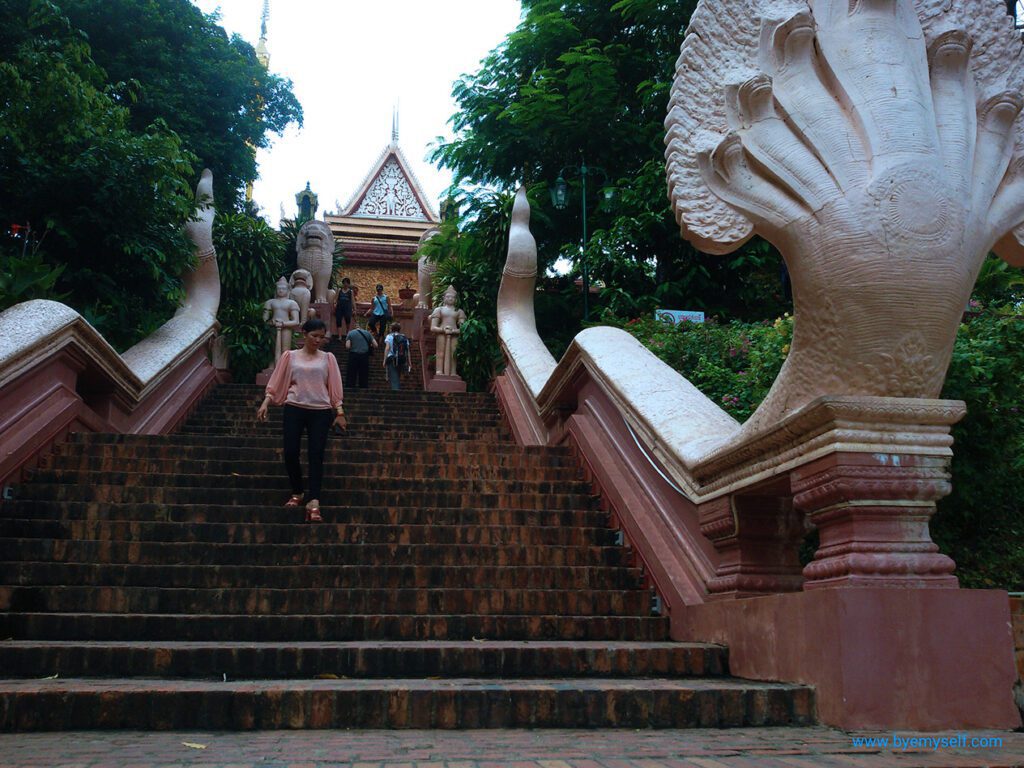
Wat Oulanum
…is located at the entrance to the old city center, about three blocks north of the Royal Palace. Built in 1443, Wat Oulanum is the most important temple of Phnom Penh and the center of Cambodian Buddhism.
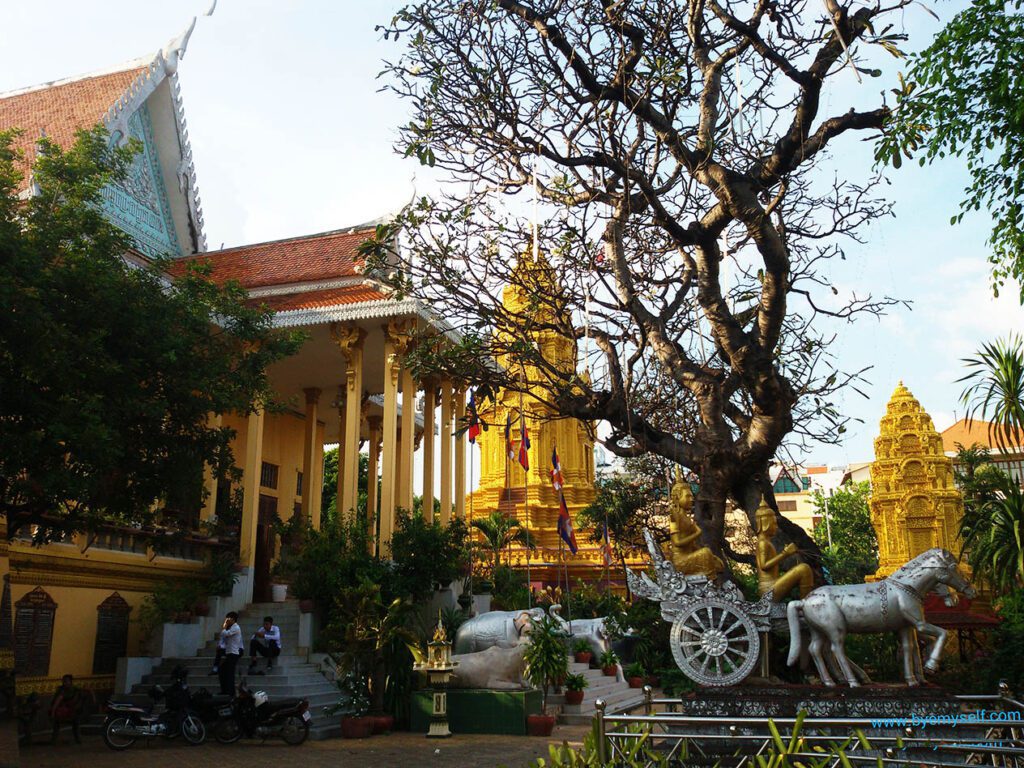
Wat Botum
…is located next to Park Botum and is very little known although it’s really beautiful with its variety of different stupas. Interestingly, many politicians and other celebrities are buried here. Built in 1442, it’s one of the most important temples in Phnom Penh.
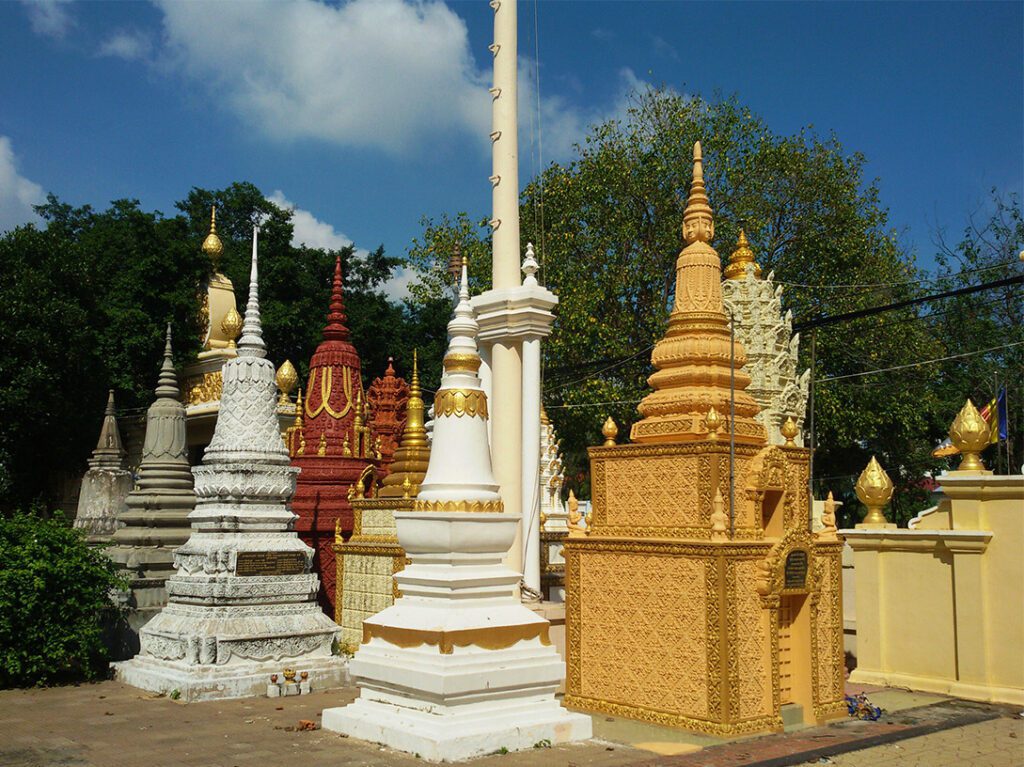
Wat Langka
…is located close to the independence monument and built in 1442. It was established as a sanctuary and meeting place for Cambodian and Sri Lankan monks. The Khmer Rouge used Wat Langka as a storehouse, therefore, they didn’t destroy it.
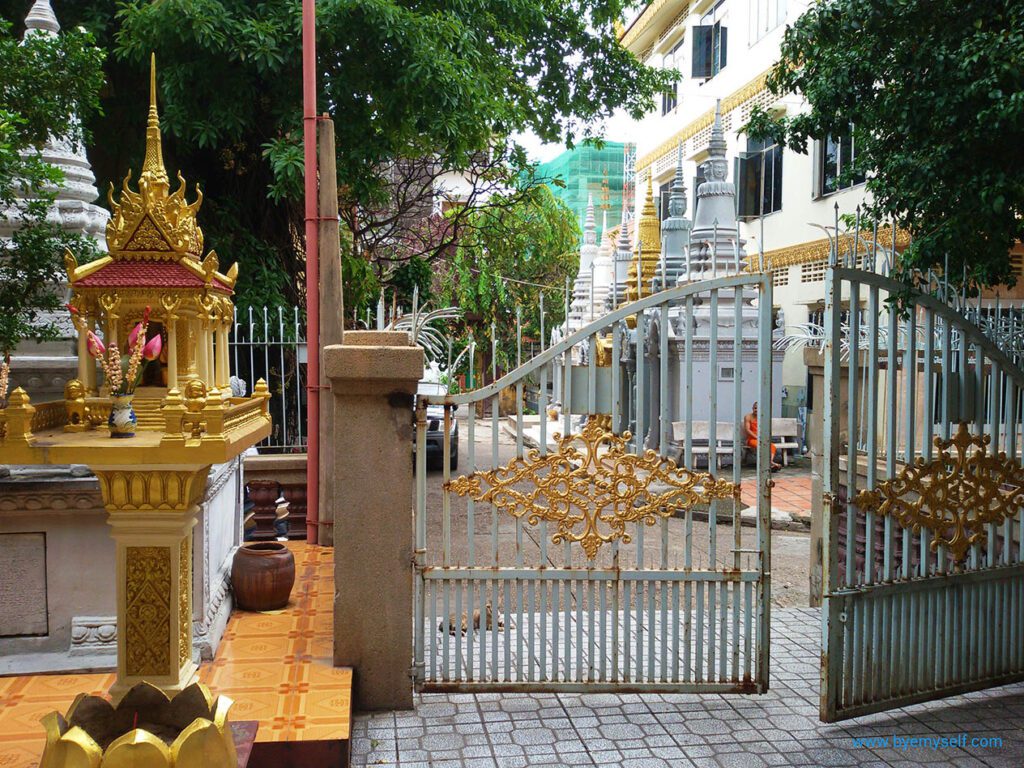
Today, Wat Langka is still very important and prestigious in Cambodian Buddhism. If you survive crossing the streets around the traffic circle, you will enjoy a nice temple with a large variety of beautifully decorated stupas. Also, there are many cats on the premises, which is very rare in Cambodia. It seems to be a designated dog country.
National and Cultural Treasures
To admire Cambodia’s ancient Khmer treasures even before heading for Angkor, you can visit the National Museum located behind the Royal Palace. And especially at night, you shouldn’t miss the traditional dances performed by the talented ensemble of Cambodia Living Art.
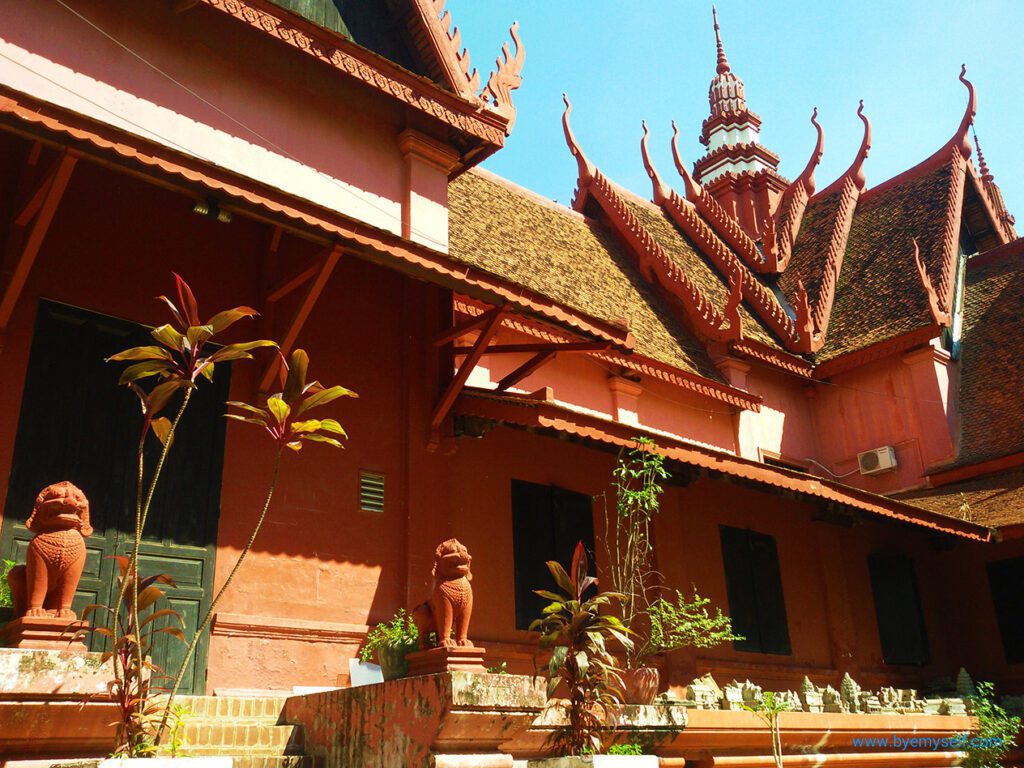
Genocide survivor and musician Arn Chorn-Pond founded this project in 1998. Today, it promotes and supports young artists performing traditional Cambodian arts.

So it’s an absolute win-win. You get to see a beautiful, inspiring show and they get the money to continue their wonderful work.
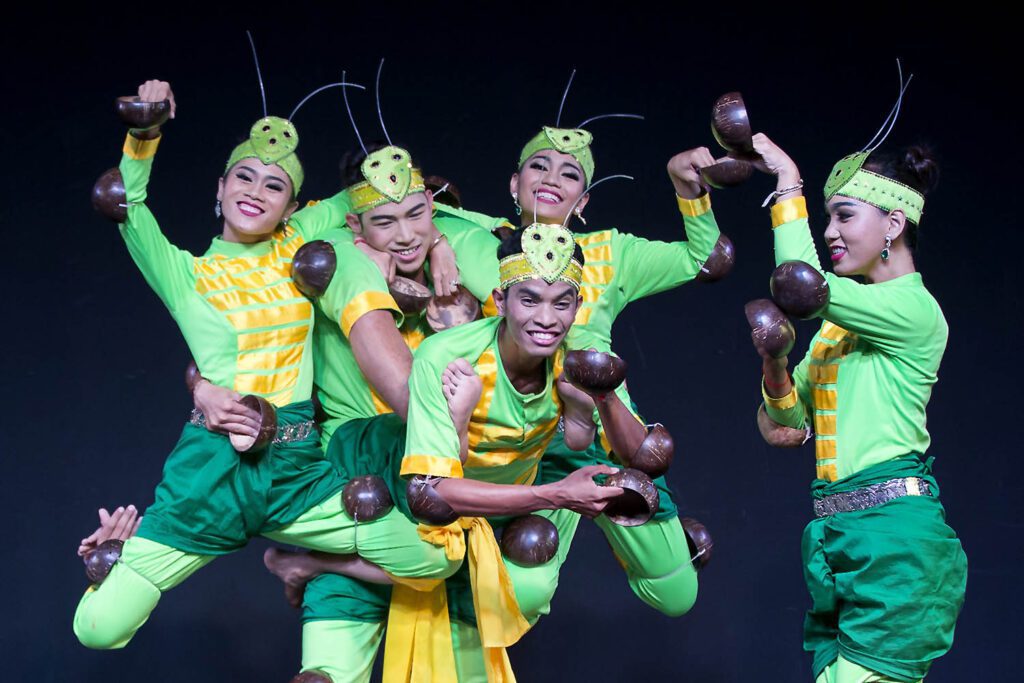
National Museum of Cambodia
Street 13
Phnom Penh
Phone: + 855 – 23 – 211 753
Email: museum_cam@camnet.com.kh
Tickets for the Dance Show can be purchased online or at a stand on the museum’s premises.
Monuments
Further south of the Royal Palace is the Park Botum, a nice green stretch adjacent to the Wat Botum that I’ve described above. It is dominated by the Cambodia-Vietnam Friendship Monument.
That this great friendship is promoted in a quite obtrusive fashion is a bit funny since many Cambodians are not that fond of Vietnam. Despite the fact that this good neighbor liberated them from the Khmer Rouge. Nonetheless, there is at least one monument demonstrating fond feelings in every larger city.
Walking all the way down the park to Preah Suramarit Boulevard, you turn right to see first the statue of Norodom Sihanouk. Behind this former leader, you’ll spot the Independence Monument. Actually, both are not that impressive.
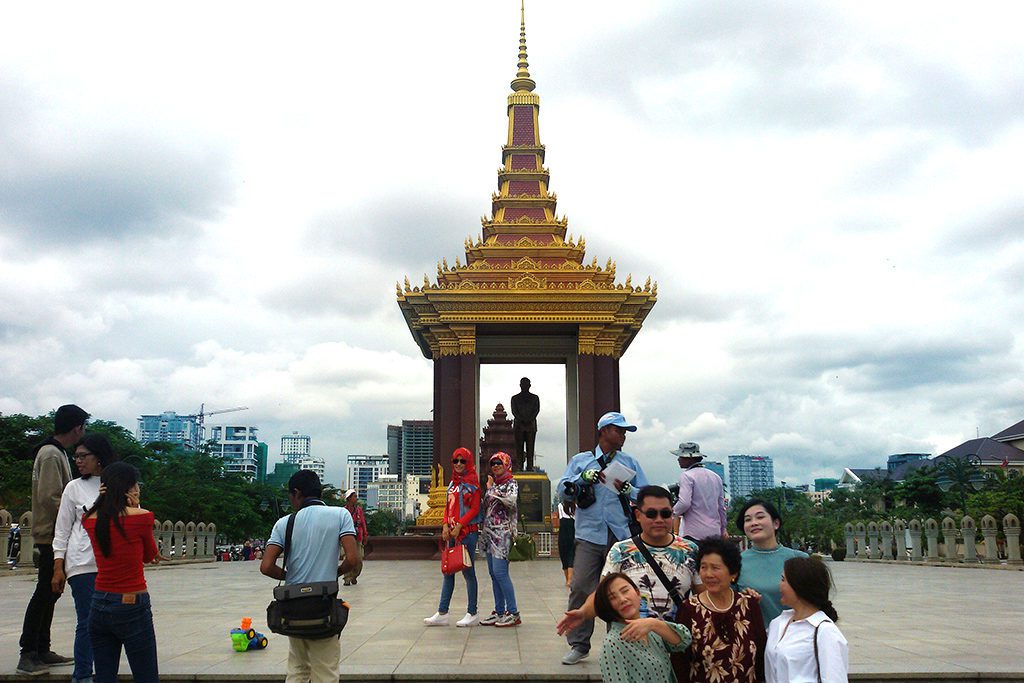
Besides the designated attractions, Phnom Penh is certainly not everybody’s cup of tea. It’s very, very dirty, there is much poverty and misery, and there is much prostitution 24/7. Hence, walking the streets east of Norodom road is not pure pleasure.
Nevertheless, if you are on a certain budget, you will find most of the hostels, cheaper hotels, and eateries here.
Koh Dach
You’ll be amazed that it takes only about 20 minutes to get away from the hustle and bustle and smog and dirt of Phnom Penh’s city center. Just crossing the Mekong by a rustic ferry, you find yourself amidst fields and rice paddies and hens and cows. The Cambodian countryside.
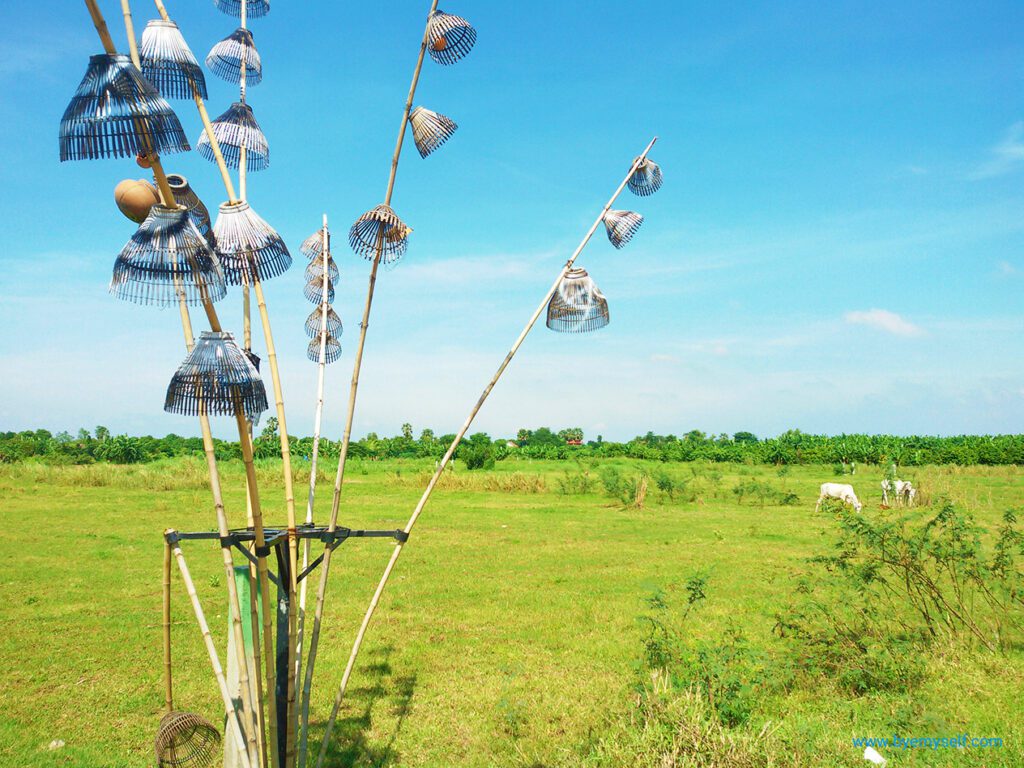
It’s called Silk Island and there are a couple of private vendors who show you how silk is woven. Then there is a silk cooperative explaining the entire process from the mulberry tree to the silken shawl.
More Rip-Off than Bargain
It won’t surprise you that they are selling these products. But it’s simply impossible that these loads of shawls and neckties and pillow covers are all hand woven at this plant.
Surprisingly you’ll find them – absolutely identical – at the markets in Phnom Penh and Siem Reap and all around the country. And guess what: Everywhere else they are much, much cheaper than on Silk Island. As a matter of fact, I’ve probably paid about six times what I had paid somewhere else.
Got the message? Do not (!) buy here, it’s a rip-off!
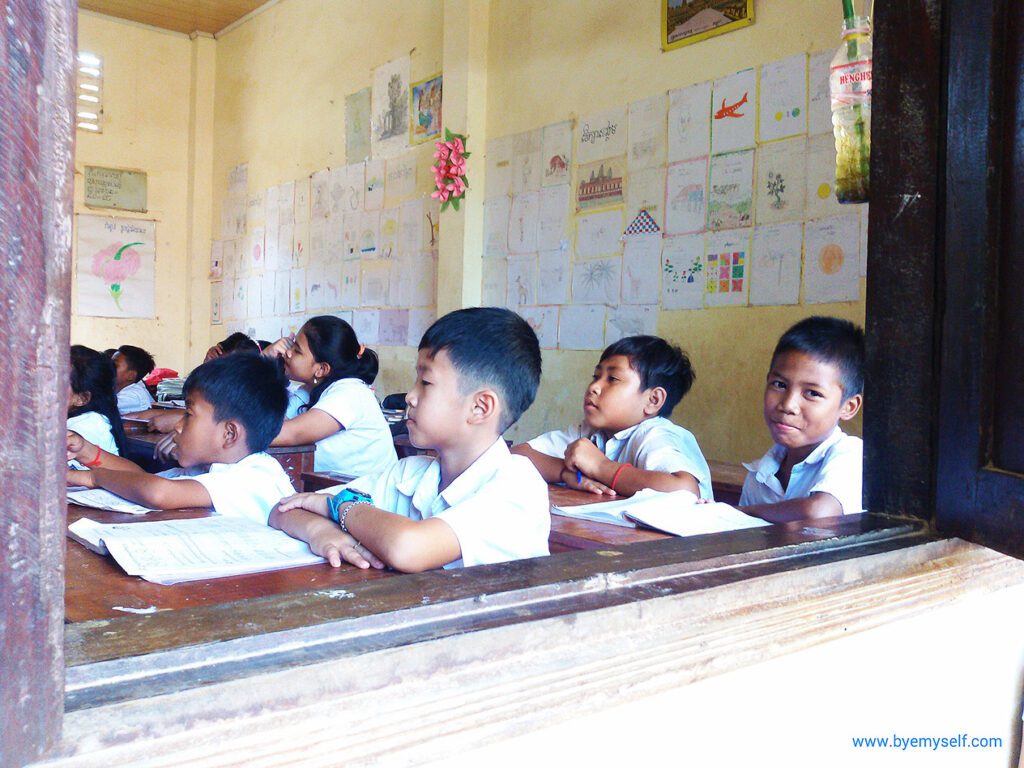
I’m afraid it will be the same with the silversmith villages around the former capital Oudong.
I did the Koh Dach tour by tuk-tuk and I paid 25 $. This is certainly not cheap, but all the organized tours I inquired about were even more expensive.
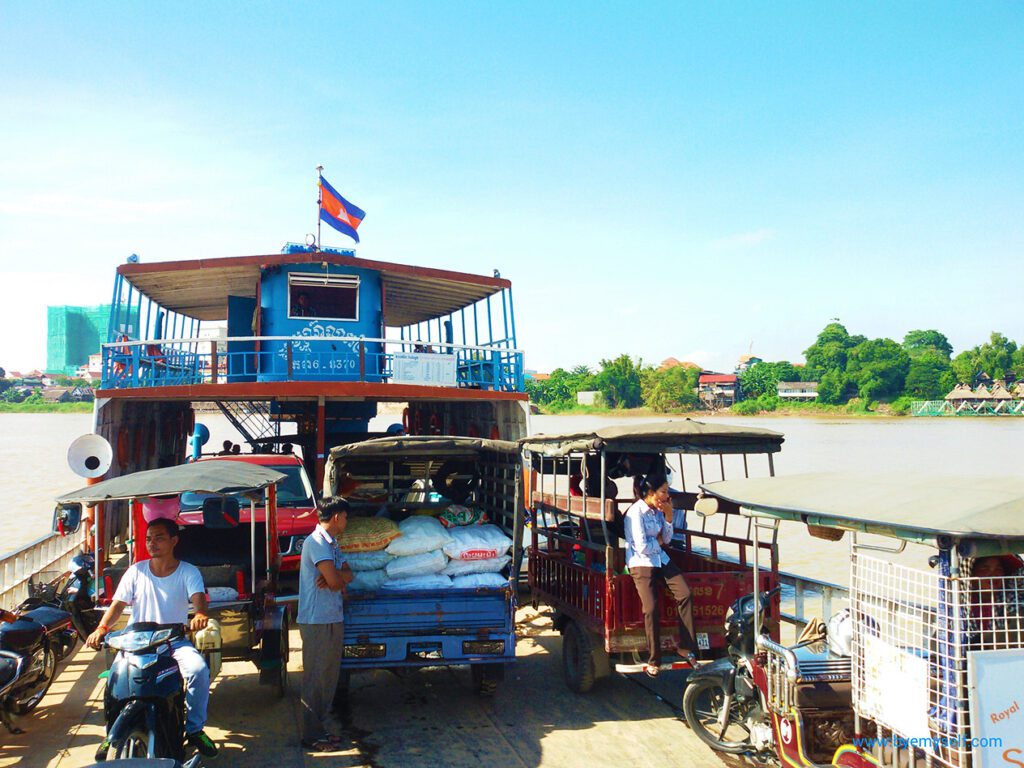
Of course, you can do the tour by yourself e. g. cycling. But the ferry is quite far from the city center. Hence, it’s along a road with much traffic and little oxygen, so I would not recommend it.
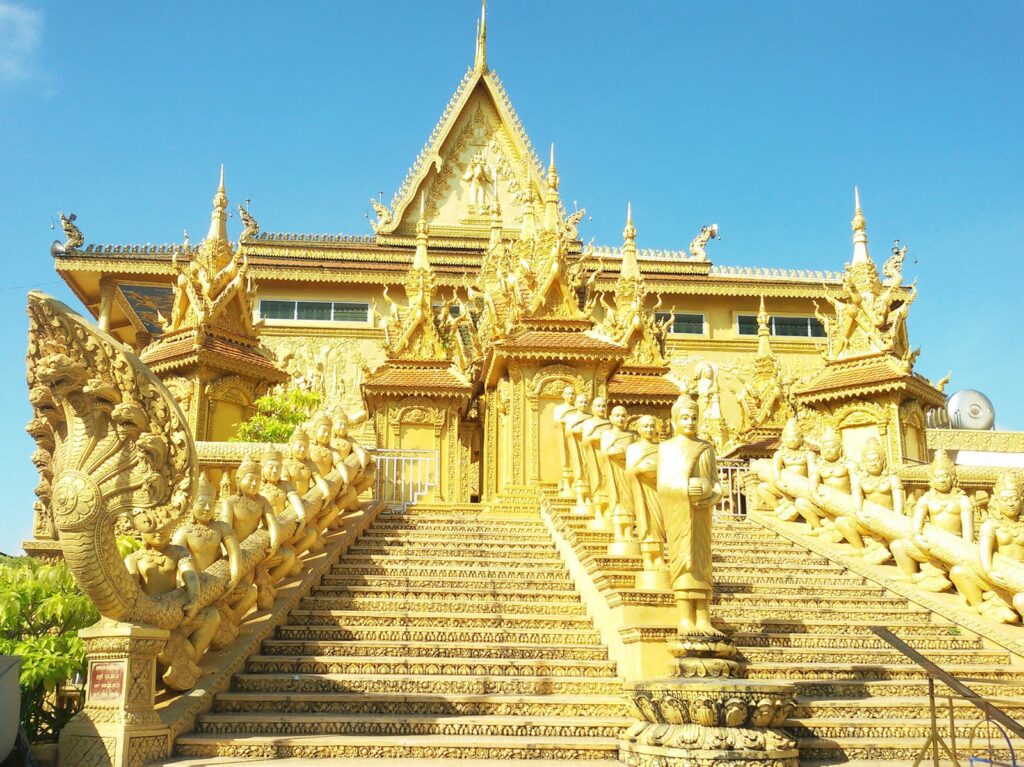
Practical Information
How to get around
Of course, there is public transportation, but since most of the interesting landmarks are in the city center, they are within walking distance. If you have to go farther, you’ll probably opt for a tuk-tuk – and will hopefully not be scammed too much.
Where to Sleep
There are accommodations practically everywhere around the downtown area. Still and all, I liked staying on Preah Ang Makhak Vann Street since it’s close to museums and the Royal Palace. Also, most of the other points of interest are within walking distance.
On this map, you can check conveniently suitable accommodation options in Phnom Penh*
Places to Eat
To have a Khmer dinner with a view – and a good, cheap bed – you should try out 11 happy backpackers.
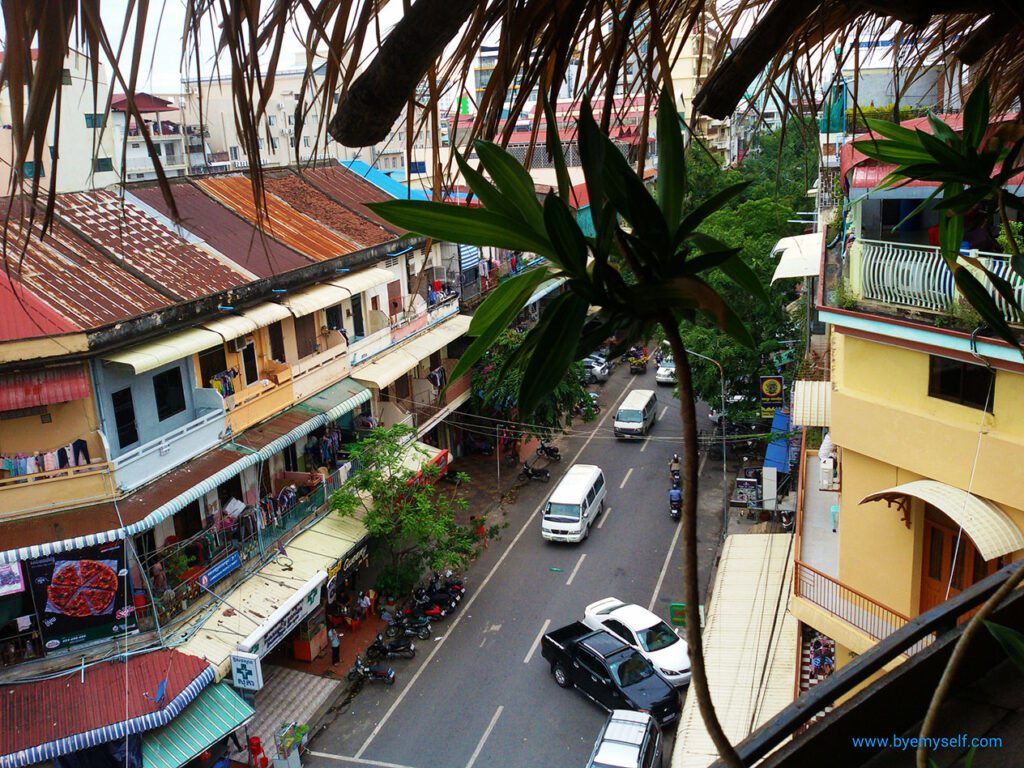
11 Happy Backpackers
#87-89, Street136
Phnom Penh
Phone: + 855 – 887 77 74 21
Email: happy11gt@hotmail.com
Wanna have some Indian for a change? Be in for a treat at Sher E Punjab.

Sher E Punjab
#16, Street 130
Phnom Penh
Phone: + 855 – 23 – 216 360
Email: rajkumar01977@yahoo.com
These are of course only two of the numberless possibilities to dine in Phnom Penh.
If you’re in for a longer walk, the promenade along the Tonle Sap river is your best option. There, the wind is mildly blowing, taking off the humid heat.
In the northern part of the riverfront are some better hotels and eateries and bars. Most of them are facing the mighty river.
What to See
I’m an avid solo-travelling woman. Since solo travel doesn’t equal solitude, I love to join organized tours here and there. They allow me to meet fellow travellers – for just a short moment or a lifelong friendship.
Therefore, here are some great ideas of what to do and which tours to join to see Phnom Penh and beyond in a comfortable and safe way*:
What to Shop
To do some shopping, turn left into 130th street and walk west to the Central Market. This market is not exclusively catering to tourists, but mainly to the local crowd.
However, you can find some nice handcrafted souvenirs here at a good price. This, of course, mainly depends on your haggling skills.
Do you want to read about all the other exciting places I’ve visited in Cambodia? Then go to the main post and take your pick! There you’ll also find valuable general information that will make your trip smoother.
Pinnable Pictures
If you choose to pin this post for later, please use one of these pictures:
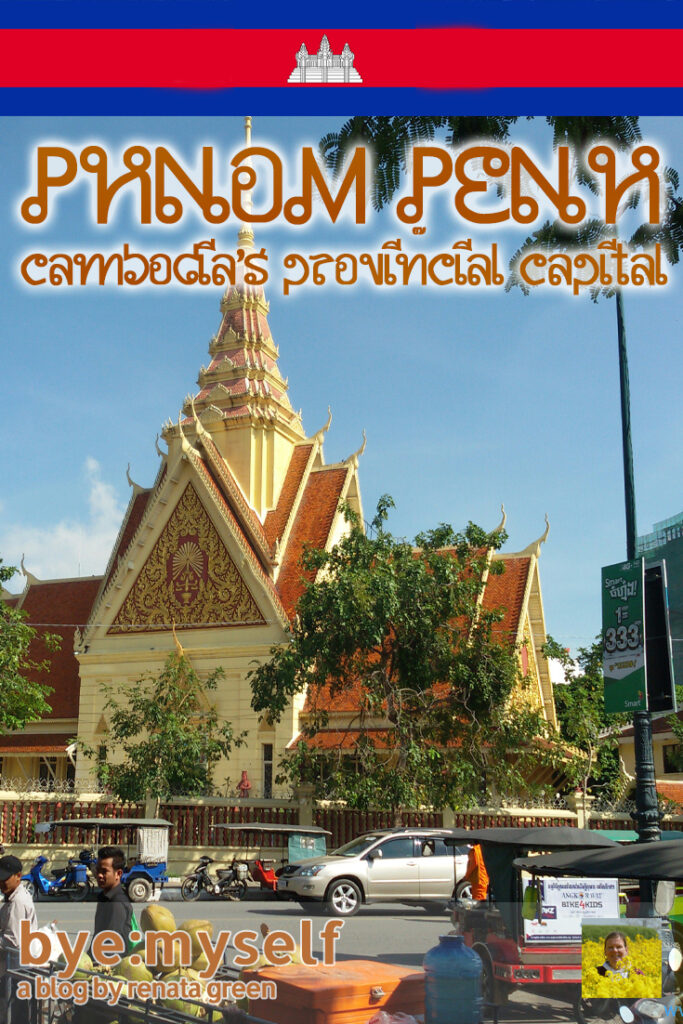
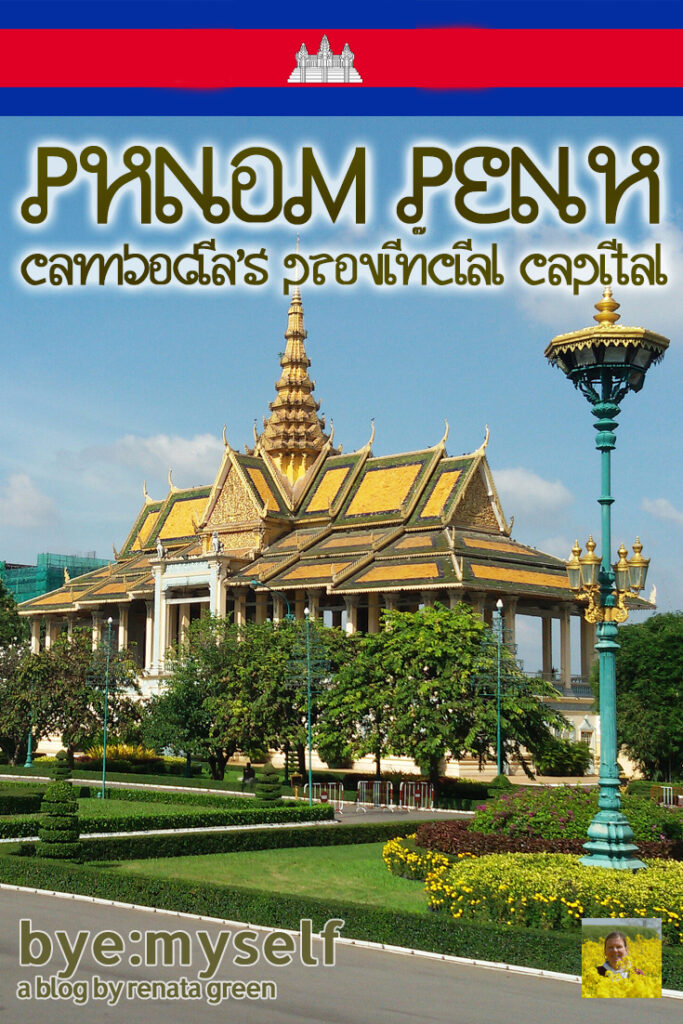
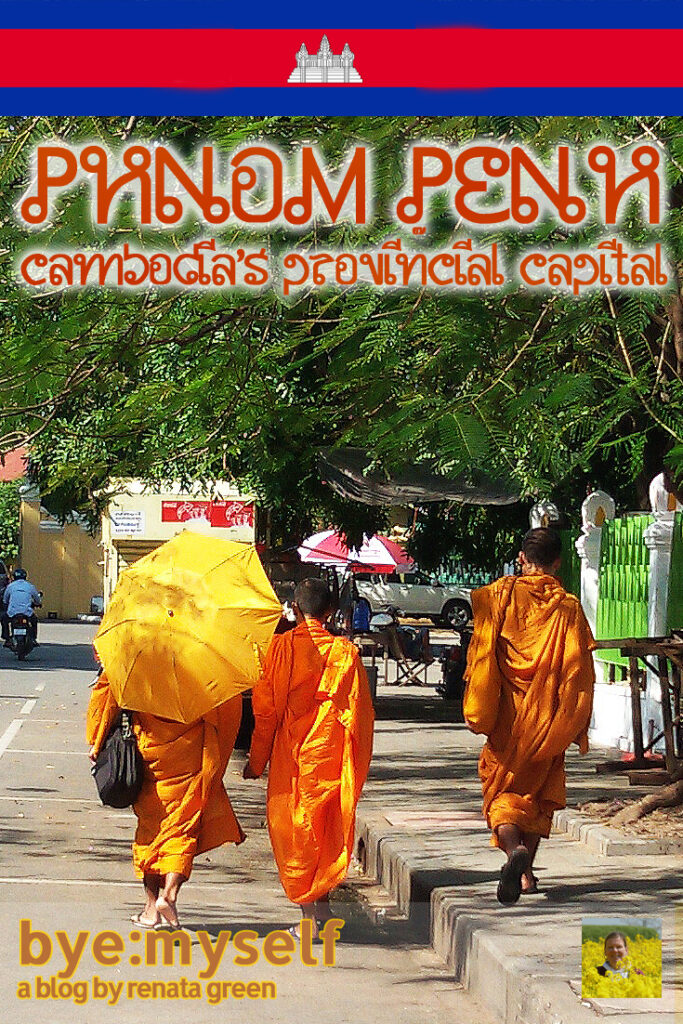
Note: I’m completing, editing, and updating this post regularly – last in November 2022.
Did You Enjoy This Post? Then You Might Like Also These:
PHNOM PENH – a guide to Cambodia’s provincial capital
KEP – Cambodia between crabs and rice fields
SIHANOUKVILLE – Cambodia’s most popular beach town
KOH RONG & KOH RONG SAMLOEM – travelling from Heaven to Hell
Guide to SIEM REAP – beyond ANGKOR WAT
i am not a dark tourist, the world is a somber place
From KAMPOT to THANSUR BOKOR and back
Holiday in CAMBODIA – a complete travel guide
* This is an affiliate link. Hence, If you book through this page, not only do you get the best deal. I also get a small commission that helps me run this blog. Thank you so much for supporting me!
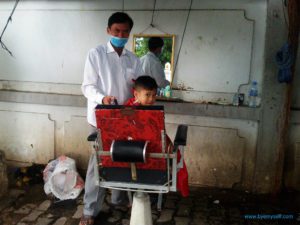
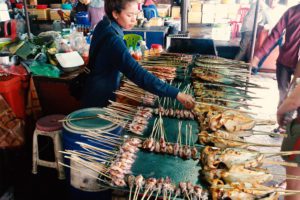
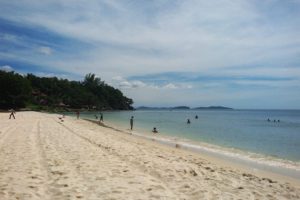
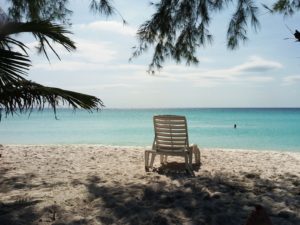
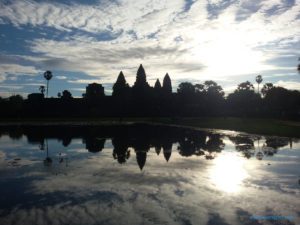
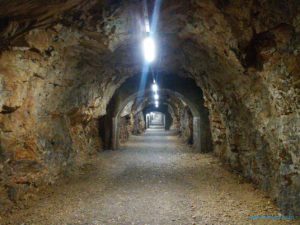
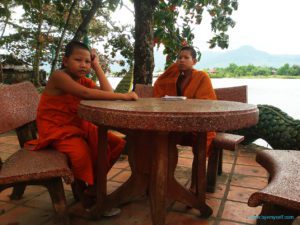
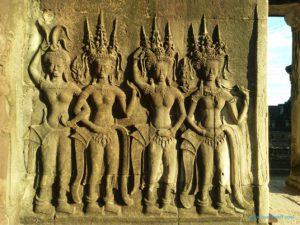
An exciting and comprehensive guide to the capital of Cambodia. I was in Phnom Penh 11 years ago, and I would like to come back to see how much the city has changed.